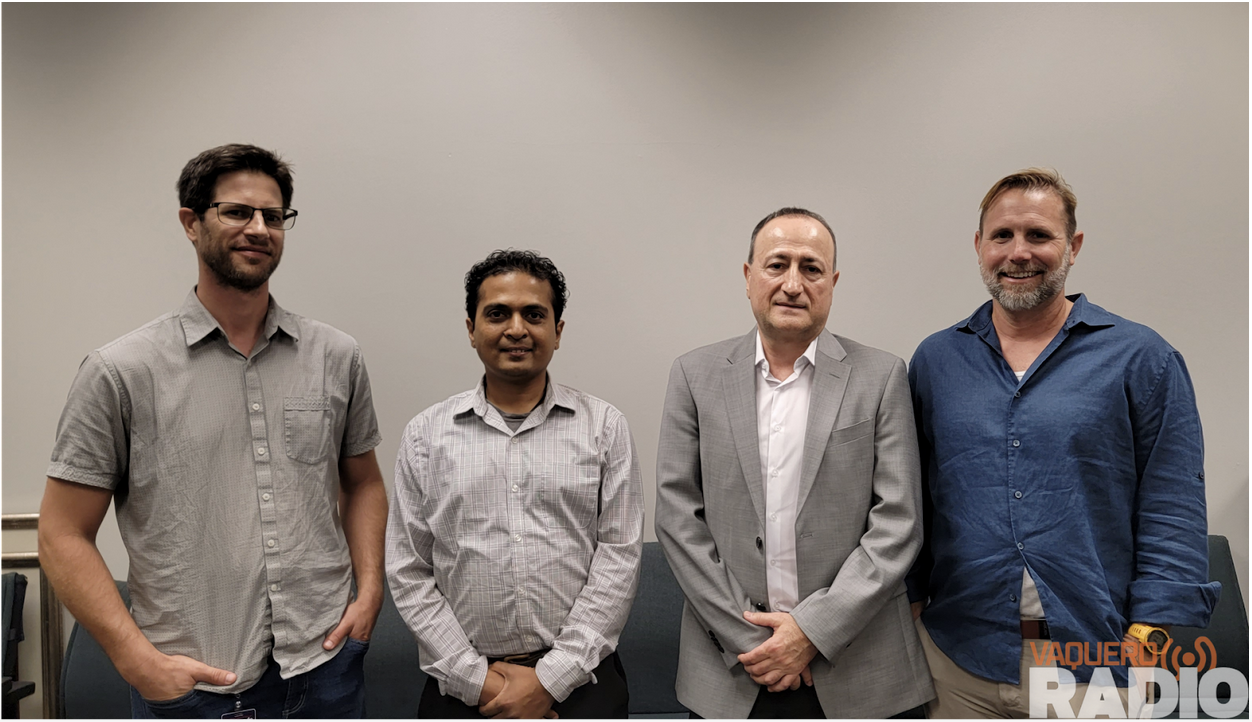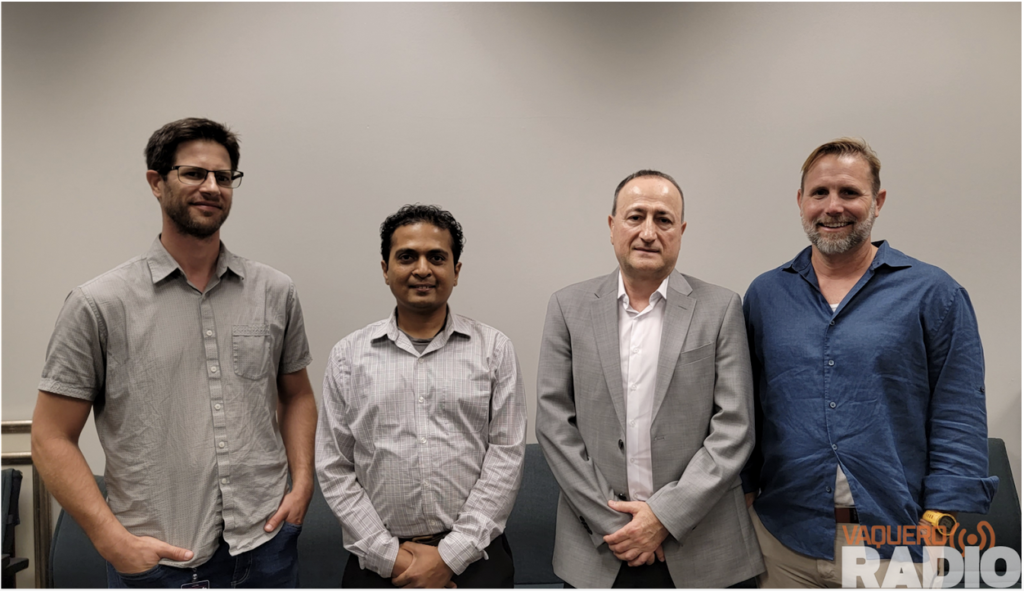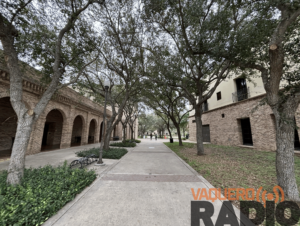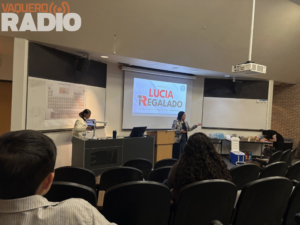

Timothy Chapman / Vaquero Radio
UTRGV’s School of Integrative Biological and Chemical Sciences can look deeper than ever with a state-of-the-art Hitachi HT7800 120kV Transmission Electron Microscope.
The National Science Foundation awarded a Major Research Instrumentation award to UTRGV, in order to acquire the microscope for interdisciplinary research and a more hands-on learning experience in classrooms.
Professor and founding Director of the School of Integrative Biological and Chemical Sciences Robert Dearth said the electron microscope is a high-end, cutting-edge imaging device primarily used for looking at objects in nanoscale.
“We’re talking about a microscope that is capable of going deep inside the cell to see all the things that we generally teach students about but never really visually are able to show them,” Dearth said. “In a simplistic term, you can take the common microscope, but this thing goes way, all the way in to show you every little component of inside a cell.”
Dearth believes this type of technology is the first of its kind in the Rio Grande Valley, which will provide a huge advantage for students.
“So, we capture [students] in a classroom, we capture them in the research labs,” he said. “And then some of them don’t have the realization that actually, if you really like this, well, go out and do it as a job for the future.”
Assistant Professor of the newly formed School of Integrative Biological and Chemical Science and the principal investigator of the grant Nirakar Sahoo is currently teaching Advanced Electron Microscopy and said the new microscope will greatly benefit the course.
“So, the students are [in] master level, graduate level [courses],” Sahoo said. “That actually [gives] those students hands-on experience at how to handle those [microscopes] and then in preparation of all these fascinating samples.”
He expressed what is the first thing he would like to observe under the electron microscope.
“We would like to try to look inside the cell,” Sahoo said. “So, I do mostly work on the lysosomes. So, the lysosomes are basically close to 20 to 30 nanometer in size and any other microscope is not capable of visualizing those.”
Associate Professor of the School of Integrative Biological and Chemical Sciences Brad Christofferson spoke about an international collaborator from Germany who is a leading expert in the field, who said in many ways using electron microscopes has become a lost expertise in universities.
“The level of practice and skill that is developed over the course of learning how to prepare samples, to get the images on an instrument like this is significant.” Christofferson said. “Some might see that as a potentially a barrier, but we see that as a huge opportunity, an incredible screening opportunity for students.”
A nanometer is a billionth of a meter and to express how small that truly is, Christofferson spoke about the discoveries that were made in understanding plant drought boundaries, with structures inside the cells resembling pipes where water flows through. All this could only be seen through the electron microscope.
Viruses are now being examined through microscopes in order for scientists to find cures to diseases, such as cancer.
Professor of Physics and Director of the UTRGV Nanoscience Lab Karen Martirosyan said common microscopes that can be found in typical science classes, such as an optical microscope, are not powerful enough to examine viruses but electron microscopes do have the capability.
“You can see it by only using [an] electron microscope and by using that transmission electron microscope, [an] electron beam will penetrate through the virus,” Martirosyan said. “So, you can see what’s going on inside with what is around.”
He said not only are the images that are captured through these scientific instruments beneficial in scientific observations and results, but it is also a work of art that can actually be submitted through agencies, such as the National Science Foundation.
According to Dearth, the electron microscope will take about nine months to assemble due to its large size and arriving in pieces.
This is Timothy Chapman for Vaquero Radio.



